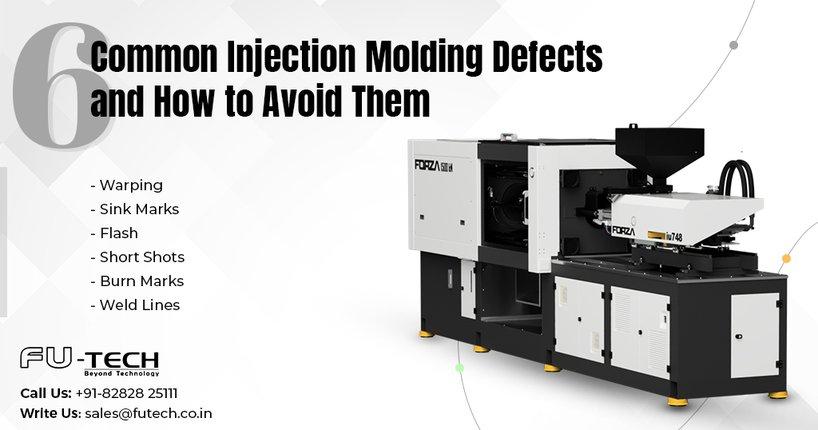6 Common Injection Molding Defects and How to Avoid Them
Injection molding is a widely used manufacturing process for producing plastic parts, offering high efficiency and repeatability. However, it can also lead to various defects...
Injection molding is a widely used manufacturing process for producing plastic parts, offering high efficiency and repeatability. However, it can also lead to various defects that compromise the quality of the final product. Understanding these common defects and their causes is essential for ensuring high-quality output. Here are six common plastic injection molding machine defects and how to avoid them.

Warping:
Warping occurs when there is an uneven shrinkage of the material, causing the part to twist or bend out of shape.
Causes:
- Uneven cooling rates
- Non-uniform wall thickness
- Inadequate mold design
Prevention:
- Uniform Cooling: Ensure that the cooling rate is consistent across the part by using uniform wall thickness and proper cooling channel design.
- Material Selection: Choose materials with lower shrinkage rates.
- Mold Design: Design the mold to facilitate even cooling and support the part uniformly during cooling.
Sink Marks
Sink marks are depressions or dimples on the surface of the molded part, typically appearing in thicker sections.
Causes:
- Insufficient cooling time
- High material shrinkage
- Inadequate packing pressure
Prevention:
- Cooling Time: Increase the cooling time to allow for complete solidification of the material.
- Packing Pressure: Increase the packing pressure to ensure the cavity is fully filled during the cooling phase.
- Design Adjustments: Design parts with uniform wall thickness to minimize variations in cooling and shrinkage.
Flash
Flash is excess plastic that extends from the edges of the part, often due to leakage of the molten material from the mold cavity.
Causes:
- Worn or damaged mold
- Insufficient clamping force
- Excessive injection pressure
Prevention:
- Mold Maintenance: Regularly inspect and maintain molds to ensure they are in good condition.
- Clamping Force: Ensure the clamping force is adequate to keep the mold halves tightly closed during injection.
- Injection Pressure: Optimize the injection pressure to prevent material from leaking out of the mold cavity.
Short Shots
Short shots occur when the mold cavity is not completely filled, resulting in incomplete parts.
Causes:
- Insufficient material in the mold
- Inadequate injection pressure
- Poor venting
Prevention:
- Material Supply: Ensure there is an adequate supply of material to fill the mold completely.
- Injection Pressure: Increase the injection pressure to ensure the material reaches all areas of the mold.
- Mold Venting: Improve mold venting to allow air to escape, ensuring complete filling of the cavity.
Burn Marks
Burn marks are discolorations or dark spots on the surface of the part, caused by the degradation of the material due to overheating.
Causes:
- Excessive injection speed
- Poor mold venting
- High melt temperature
Prevention:
- Injection Speed: Reduce the injection speed to prevent excessive friction and heat buildup.
- Mold Venting: Improve mold venting to allow gases to escape and prevent burning.
- Temperature Control: Optimize the melt temperature to avoid overheating the material.
Weld Lines
Weld lines are visible lines or marks on the part where two or more flow fronts meet and fail to bond properly.
Causes:
- Low melt temperature
- Inadequate injection speed
- Poor mold design
Prevention:
- Melt Temperature: Increase the melt temperature to ensure proper bonding of flow fronts.
- Injection Speed: Optimize the injection speed to facilitate better merging of flow fronts.
- Mold Design: Improve the mold design to promote smoother flow paths and minimize the formation of weld lines.
Conclusion
Understanding and addressing these common injection molding defects is essential for producing high-quality plastic parts. By optimizing process parameters, maintaining molds, and ensuring proper material handling, manufacturers can significantly reduce the occurrence of defects and improve the overall quality of their products. Implementing these preventive measures will not only enhance product quality but also increase efficiency and reduce production costs in the long run.
No comments yet. Login to start a new discussion Start a new discussion